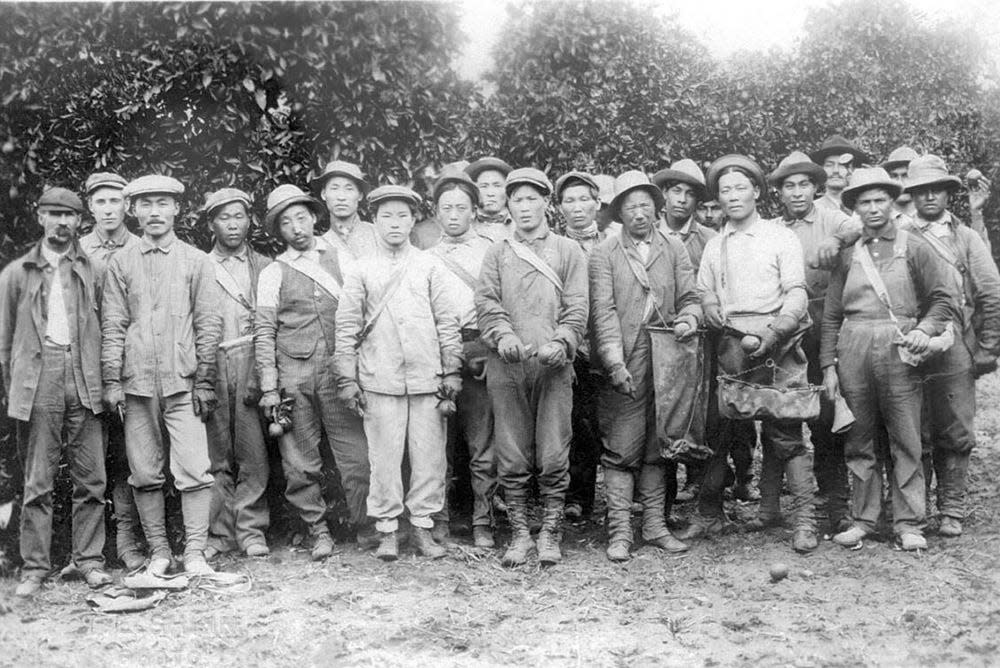How did we forget about the first Koreatown in America, right here in Riverside County?

In the early 20th century, Korean Americans flocked to Pachappa Camp in citrus-rich Riverside to gather, live and work together, and keep the Korean identity alive. During its short stretch of existence, this self-governed California community made for and by Korean Americans became a mecca for the Korean independence movement and a bulwark against anti-Asian racism in America.
But Pachappa Camp’s significance was forgotten about until the early 2000s, when students at the University of California, Riverside, located the camp’s name on an old map. Intrigued, Edward—a Korean American studies scholar—and a team of researchers and students dug through archives to uncover an amazing tale of survival and perseverance.
In 1902, the first married Korean couple to come to the United States, Dosan Ahn Chang Ho and Heyryon Lee, also known as Helen Lee Ahn, arrived in San Francisco. Dosan (his pen name) was a Korean independence activist who came, in part, to learn about democratic ideals. At the time, Korea was struggling to remain an independent nation. Activists like Dosan wanted to preserve Korea’s sovereignty as an empire and monarchy, and prevent Japan from taking over.
The couple settled in Riverside, enticed by its warm climate and job opportunities—not to mention its burgeoning Korean population. Once there, Dosan founded a Korean labor bureau, which offered economic opportunities to entice more Koreans to come to Riverside.
When Dosan founded Pachappa Camp in 1905—at 1532 Pachappa Ave., previously a labor camp for Chinese railroad workers—it consisted of about 20 vernacular, single-story, wood-frame buildings, in addition to a one-and-a-half story community center duplex. In her memoir "Quiet Odyssey: A Pioneer Korean Woman in America," camp resident Mary Paik Lee recalled the cold and lack of amenities, including no running water or electricity, in the “shanties.” But Korean Americans flooded the site with warmth and welcome, holding Korean language and culture classes. Calvary Presbyterian Church, which took an interest in the diaspora, provided English classes.
But as Pachappa was starting, Korean Americans found themselves a people without a country. That same year, 1905, Japan annexed Korea under military rule; by 1910, Korea was officially folded into Japan’s empire. Pachappa, in response, became an active site of Korean independence activities led by Dosan himself. One of the independence organizations started in “Dosan’s Republic” was the cooperative association Gongnip Hyeophoe, which laid foundations for the development of the Korean National Association (KNA), which represented the interest of Koreans in the United States, Russia and Manchuria.
In 1911, the KNA hosted a 10-day conference at Pachappa, where chapter presidents from around the United States laid out the principles that would go into the founding of the Republic of Korea (South Korea) 37 years later. KNA members agreed on 21 articles of governance for Koreans, including guidelines on social practices, internal policing mechanisms, and committees that regulated everything from the way Koreans dressed, to curfew times.
Pachappa Camp’s residents had to fight for their rights both in Korea and the United States. Asians were the first minority community to be targeted specifically by U.S. immigration laws, beginning in 1882, and Pachappa residents experienced anti-Asian hatred firsthand. Lee, in her memoir, recalled other students singing racist songs toward her at school. Jacob Thun, another Pachappa resident, wrote about being called slurs like “Jap.” In 1906, the Riverside Daily Press reported on five Korean boys whose bicycle tires had been “slashed to pieces.”
Pachappa might have continued to flourish if not for the 1913 Great Citrus Freeze, which decimated crops and forced laborers to leave Riverside. Over the next five years, the camp’s numbers dwindled until Pachappa closed in 1918. But its influence lived on long past its end, with former residents spreading the spirit of Korea’s independence movement with them wherever they went.
In 2016, the City of Riverside formally recognized Pachappa Camp as its first Point of Cultural Interest; among the attendees at a celebration was Dosan’s youngest son, Ralph Ahn. The designation ensures that the first U.S. Koreatown will not be forgotten again.
Edward T. Chang is a professor of Ethnic Studies and the founding director of the Young Oak Kim Center for Korean American Studies at the University of California, Riverside. His latest book is “Pachappa Camp: The First Koreatown in the United States.” Carol K. Park is a filmmaker, researcher and the author of “Memoir of Cashier: Korean Americans, Racism and Riots” and co-author of “Korean Americans: A Concise History.” They wrote this for Zocalo Public Square
This article originally appeared on Palm Springs Desert Sun: The first Koreatown in the U.S., in Riverside, was nearly forgotten

